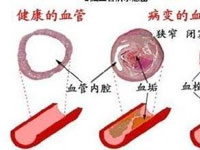DTI成像可以预测急性脑出血后的长期运动功能的恢复情况
Diffusion Tensor Imaging Predicts Long-Term Motor Functional Outcome in Patients with Acute Supratentorial Intracranial Hemorrhage
Da-Ming Wanga, Jie Lib, Jian-Ren Liud, Hao-Yu Huc
Departments of
aPhysical Medicine and Rehabilitation,上海交通大学医学院附属第九人民医院神经内科刘建仁
bRadiology and
cNeurology, Zhejiang Chinese Medical University Affiliated Jinhua TCM Hospital, Jinhua, and
dDepartment of Neurology and Neurointervention, Shanghai Ninth People’s Hospital Affiliated to Shanghai Jiao Tong University School of Medicine, Shanghai, PR China
Address of Corresponding Author
Cerebrovasc Dis 2012;34:199-205 (DOI: 10.1159/000341857)
Key Words
Intracerebral hemorrhageDiffusion tensor imagingMotor recoveryCerebral pedunclesFractional anisotropyAbstract
Background/Aim: It remains unclear how wallerian degeneration of the pyramidal tract (PT) in the acute phase of supratentorial intracranial hemorrhage (ICH) correlates with the long-term functional outcome. The aim of this study was to quantify and predict the long-term neuromotor outcome using diffusion tensor imaging (DTI) during the early stages of ICH. Methods: Twenty-seven patients with a hemiparetic ICH were prospectively studied using DTI either within 3 days or at 2 weeks after onset. A region-of-interest-based analysis was performed for fractional anisotropy (FA) of the PT in the cerebral peduncle. The degree of paresis was assessed upon admission and at 6 months using paresis grading (PG), and the functional outcome was evaluated using the modified Rankin Scale (mRS). The activities of daily living were evaluated using the Functional Independence Measure (FIM). Results: The FA values within 3 days and after 2 weeks of ICH onset were significantly decreased at the affected side (p = 0.001, reduced by 11%; p < 0.001, reduced by 14%, respectively), but the mean diffusivity at the same time points remained unchanged (p = 0.05 and p = 0.136, respectively). The ratio of the FA (rFA) at the affected side to that of the unaffected side within 3 days was negatively correlated with the PG (p < 0.001, r = C0.642), positively correlated with the FIM scores (p = 0.004, r = 0.532), and negatively correlated with the mRS scores at the end of follow-up (median = 17 months) (p = 0.010, r = C0.490). The rFA at 2 weeks was positively correlated with the FIM (p < 0.001, r = 0.661) and negatively correlated with mRS scores and PG at the end of follow-up (p < 0.001, r = C0.653; p < 0.001, r = C0.700). For both patients with good and poor outcomes based on the PG, the area under the receiver operating characteristic (ROC) curve for rFA at 2 weeks was greater than the area under the ROC for rFA within 3 days, and the cutoff point for the rFA at 2 weeks was set at 0.875 (sensitivity 76%, specificity 89%). Conclusions: This study demonstrated that the use of DTI during the early stages of ICH may predict motor outcomes at 6 months after ICH. Moreover, as compared to use of DTI within 3 days of ICH onset, the application of DTI at 2 weeks after ICH could more accurately predict the motor outcomes and daily living activities of patients.
Copyright © 2012 S. Karger AG, Basel
- 上一篇:丘脑痛与运动皮层电刺激
- 下一篇:脑出血后锻炼用针灸按摩,有用吗
相关文章
- 脑出血如何运动
- 脑出血常见的后遗症及康复锻炼方法
- 脑出血病人的功能锻炼方法
- 脑出血患者怎么锻炼身体呢
- 脑出血怎么运动
- 脑出血运动
- 脑出血急性期的锻炼方法
- 脑出血后锻炼用针灸按摩,有用吗
- DTI成像可以预测急性脑出血后的长期运动功能的恢复情况
- 丘脑痛与运动皮层电刺激
- 热门阅读
免费提问
























